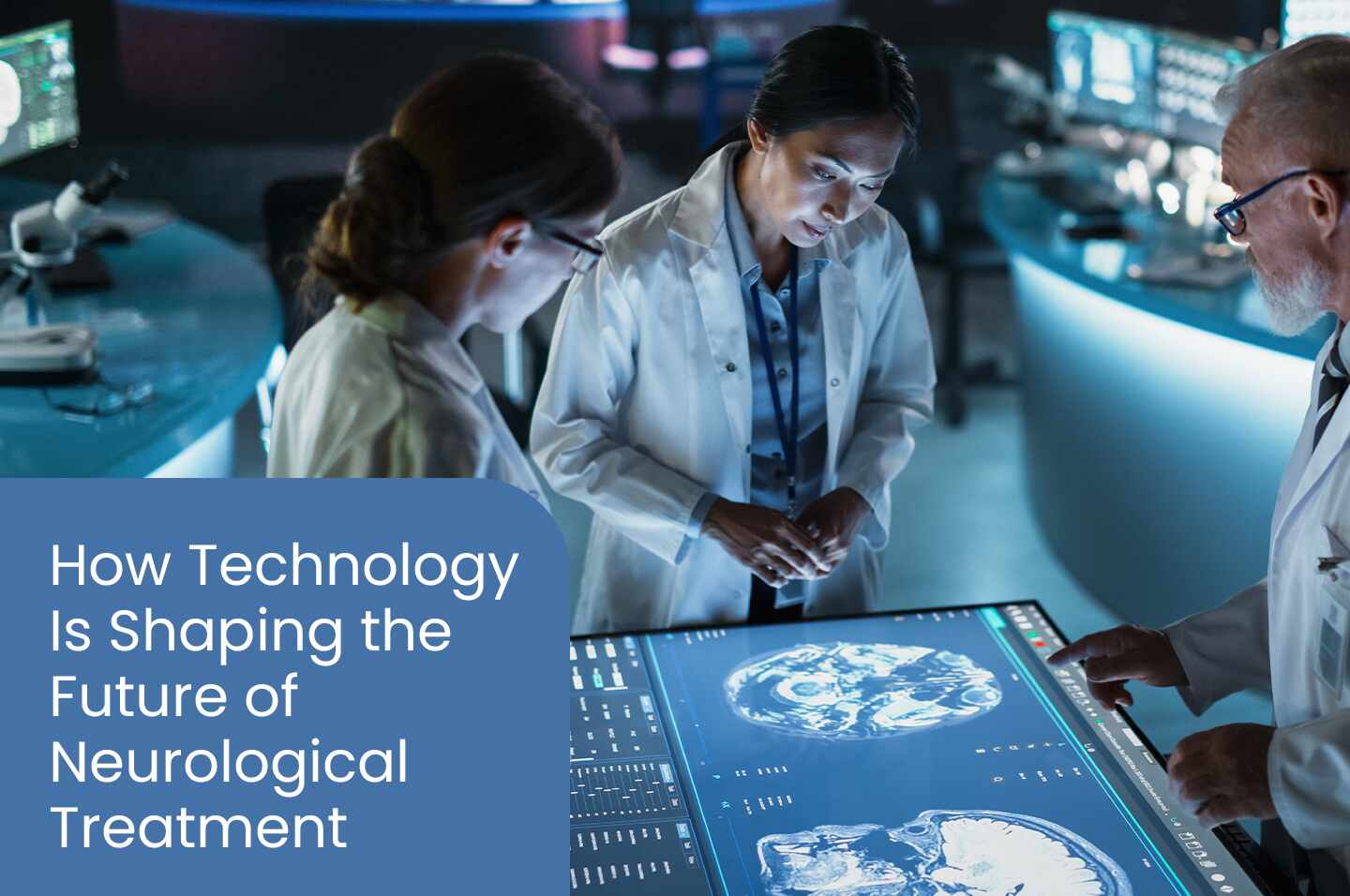
How Technology Is Shaping the Future of Neurological Treatment
- Home /
- How Technology Is Shaping the Future of Neurological Treatment

Over the past two decades, brain health has taken centre stage. Clinical research, policy discussions, and public awareness have moved the needle, slowly at first, then with remarkable speed. Neurological treatment isn’t simply progressing. It’s being reimagined.
The rise of braincare technology has introduced more than novelty. It has opened doors for patients navigating cognitive, emotional, and motor challenges, many of whom were previously limited by outdated models of care. What was once restricted to labs or research pilots is now available in clinics. Some of the most cutting-edge treatments can be deemed a new standard in personalized care.
What does that look like in daily practice? For one, care is becoming less fragmented. It is more adaptive, more consistent, and more closely aligned with the rhythms of an individual’s life. Below, we take a closer look at the technologies guiding this shift and why Magnetic E-Resonance Therapy, or MeRT, in particular, has captured widespread attention as one of the most personalized approaches in neurological care today.
Virtual Reality: More Than A Game
Once limited to entertainment, virtual reality is proving itself as a transformative tool in brain therapy. In immersive virtual settings, stroke patients can practice walking, reaching, or balancing without risk. The environment adjusts with their progress, offering a way to increase difficulty without discouragement.
Cognitive training also benefits. Tasks that sharpen memory, problem-solving, and attention are embedded into simulations that stimulate engagement. It matters because for many, motivation and consistency are the missing ingredients in long-term rehab. The virtual space provides safety and structure. And when therapy feels less like a chore, it’s easier to keep showing up.
Artificial Intelligence: Predicting, Personalizing, & Progressing
When Artificial Intelligence (AI) enters the picture, the goal isn’t to replace care, but to refine it. Systems that were once used to scan retail and purchasing behaviours are now being applied to EEGs, clinical histories, brain scans, and rehabilitation progress. From these data points, AI can generate deeply individual treatment insights.
You might wonder: how does this improve care? Imagine a software that predicts when symptoms might escalate before your doctor notices or detects an abnormal brainwave pattern that may have gone unnoticed. That kind of responsiveness changes everything.
Therapists, doctors, and other healthcare professionals are freed from manual tracking and can instead focus on building trust and a strong therapeutic relationship with their patients. Also, AI-driven prosthetics are becoming increasingly adept.
Rather than requiring patients to adapt to them, these devices are beginning to learn from the user, improving function with each use.
Robotics: Repetition Meets Precision
Robotic therapy may sound complex, but the idea is simple: help people move better, more often, and with less risk.
Repetition supports recovery, but must be done in a safe and stable environment. Robotic systems provide the structure needed for consistency. Wearable exoskeletons assist with walking and standing, while robotic arms help users guide their hands through daily tasks and fine movements.
These tools rely on a complex combination of neuroscience and engineering, but their purpose is human: to support progress, reduce therapist strain, and provide real-time feedback. Therapists remain central to the process. Technology helps them do more, with less guesswork.
For many patients, improvements in movement extend beyond physical recovery. Regaining control often strengthens one’s confidence as well.
Wearables: Real-Time, All the Time
Symptoms rarely follow a schedule. They shift, fade, or escalate before a provider sees them. Wearable devices help bridge that gap.
Smartwatches, EEG headbands, and biosensors can track brain activity, tremors, sleep, and more as life unfolds. For patients managing conditions like epilepsy or Parkinson’s, this form of monitoring has been especially valuable.
According to Grand View Research, the U.S. wearable medical device market exceeded $10 billion in 2023. That growth reflects more than tech enthusiasm. It shows that people want tools to help them stay informed, and that clinicians want data grounded within everyday experience.
By offering continuous, early signals, wearables help protect against the escalation of symptoms. Since they’re unobtrusive, they gather insight without interruption. You don’t adjust your day to use them. They move with you.
Neuromodulation: Rewiring the Brain
Sometimes the issue isn’t structural but rhythmic. Neurological dysfunction (conditions affecting the spinal cord, brain, and nerves impacting bodily functions) often stems from disrupted neural signals that misfire, interfering with memory, emotion, sleep, and movement.
Neuromodulation (alterations of nerve activity using targeted stimulus to an established neurological site) aims to address these disruptions directly. Some therapies are invasive. Others aren’t. Yet each seeks to achieve the same goal: to restore a functional rhythm to brain activity without relying on trial-and-error prescriptions.
For example, deep brain stimulation (DBS) utilizes surgically implanted electrodes to target irregular brain activity. It’s well known for Parkinson’s, but research has expanded into OCD, epilepsy, and major depression. On the non-invasive end, Transcranial Magnetic Stimulation (TMS) delivers magnetic pulses externally.
Since the 80s, TMS has evolved into a key tool for patients who haven’t found relief in medications or psychotherapy. Within TMS, MeRT has stood out for its deep tailoring of the approach to each patient’s brain.
MeRT: A Personalized Approach
MeRT begins with measurement, not assumption. At Neurosync, your care starts with a qEEG or EKG to map your brainwave activity and heart-brain coherence. That data’s analyzed with a patented algorithm. A physician then reviews and approves your individualized treatment plan.
The goal isn’t just stimulation, but to identify disrupted rhythms and support their realignment. Sessions are comfortable. You’re seated while a magnetic coil delivers brief pulses, typically at a rate of 6-8 seconds per minute. Each session lasts approximately 45 minutes, with reassessments conducted every 10 sessions to track progress and adjust the protocol as needed.
Improvements often arrive gradually, but when they do, patients describe meaningful shifts: better sleep, clearer thought, improved mood. The most common feedback? A sense that the brain is finally working in sync.
What Can MeRT Improve?
There’s enormous potential to explore here. At Neurosync, MeRT is used to support patients with:
- Autism Spectrum Disorder
- PTSD and other anxiety disorders
- Traumatic Brain Injury
- Major Depressive Disorder
Patients have also reported:
- Better sleep quality
- Stronger focus and mental clarity
- Lower anxiety and improved mood regulation
- Better social interaction in children with autism
Although results aren’t guaranteed, these outcomes point to the brain’s capacity for change. Mainly, when supported in the right way, even complex conditions may become more manageable.
What’s Next?
Is MeRT right for you or someone you love? Start with a consultation.
At Neurosync, you won’t receive a one-size-fits-all plan. The process is driven by your brain data, interpreted by experts, and adjusted as you progress. This data-informed and non-invasive approach has offered relief for many who felt out of options.
When your brain isn’t functioning as it should, everything else becomes harder. But if you could restore its activity without medications or invasive approaches, wouldn’t that be worth exploring?
Call 365-799-8438, email neurosyncbtc@outlook.com, or complete the online intake form to initiate the process. No two brains are the same, but with the right conditions, yours can heal and thrive.
Working Hours
Email: neurosyncbtc@outlook.com
Woodbridge. ON. L4L 1A6

